NYC’s Forgotten ‘War on Christmas Trees’
Discover how an obscure holiday crackdown affects festive street vendors today!


Opened in 1940 by the New York Tunnel Authority, the Queens-Midtown Tunnel is one of the largest public works projects of the New Deal era — constructed to alleviate congestion on the East River bridges, which were flooded with cars, trolleys and the subway at the time. Comprised of twin tubes made up of four traffic lanes, the Ole Singstad-designed tunnel spans 6,414 feet long and connects Queens to Midtown Manhattan.
In the many years since its groundbreaking, the Queens-Midtown Tunnel remains just as vital to New York City as it did when it first opened to traffic. Here, we’ve rounded up 11 of our favorite secrets about the tunnel:
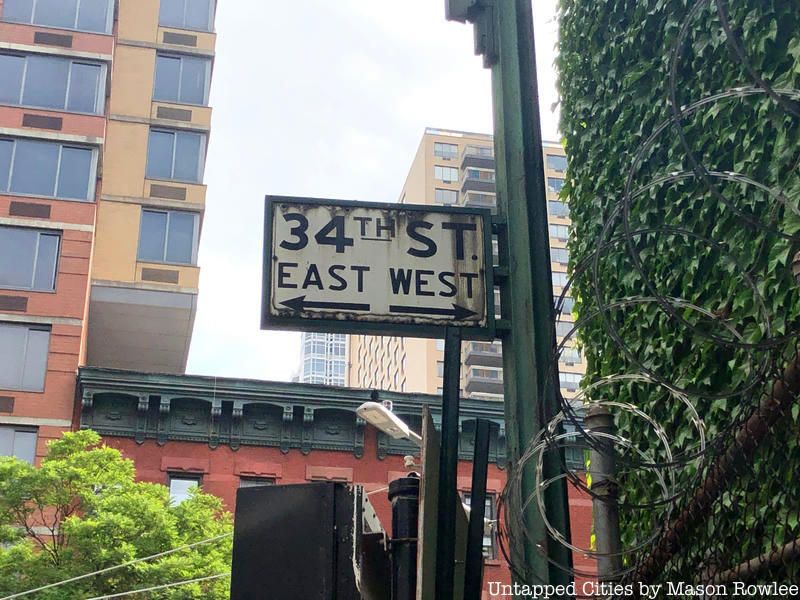
Have you spotted the functionally named “Tunnel Exit” Street between 34th and 35th Street? It’s the Queens Midtown Tunnel exit street, that is. Alongside a wall of tenement brick, shrubbery, and barbed wire hangs a beautiful and pretty well-maintained original tunnel sign from the 1940s, when the tunnel was completed! As Untapped Cities reader Louis Sessa also points out, the lamppost on which the sign is attached is also quite old.
As we noted on our previous History of Streets on functionally named conduits, Tunnel Entrance and Tunnel Exit Streets have no street addresses even though the surrounding neighborhood has blossomed over the past seven decades. Also read about the history of street signage in New York City here.
Between the years 1981 to 2011, the Queens-Midtown Tunnel was closed one night of each spring in anticipation for the annual Ringling Bros. and Barnum & Bailey Circus Animal Walk, when elephants march from Queens, through the tunnel and to Madison Square Garden. The walk was about two-miles long (which would have taken a human 40 minutes to complete).
After the circus moved to the Barclays Center in 2012, the elephant walk through the tunnel ceased to take place — much to the delight of animal activists.

FDR’s 1932 Packard Car, driven by Governor Andrew Cuomo
The Midtown Tunnel was intended to be constructed starting in the early 1930s, but like many public works, it was derailed by the Great Depression. But the project came back to life in 1935, thanks to a $58 million Public Works Administration Loan, signed by President Franklin Delano Roosevelt.
A few weeks before opening day, FDR became the first person to drive through the tunnel. Roosevelt also signaled the ground breaking in 1936 with the push of a ceremonial button.
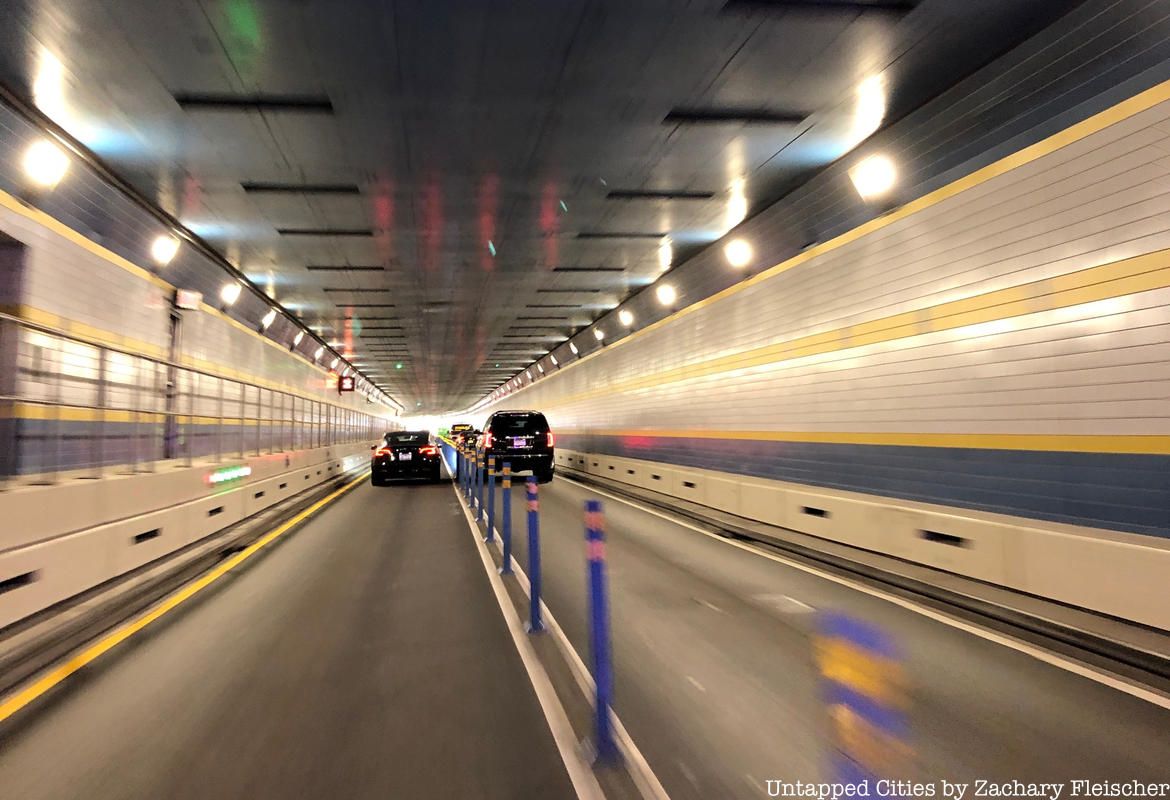
The Queens Midtown tunnel officially opened to traffic on November 15, 1940, but 5,000 people had the opportunity to walk through one of its tubes a few days prior. As reported by amNewYork, the “tunnel warming” was permitted as a “show of gratitude” to the people who had to endure the noise of construction on the Manhattan side.
While walking across, one person reportedly exclaimed “What a bomb shelter this tunnel would make!,” according to a New York Times article, published on November 11, 1940.

Photo courtesy MTA
Ole Singstad, the same tunnel engineer behind the Holland Tunnel, was also the mastermind behind the Queens Midtown Tunnel. Due to geological variations below the East River, however, drilling under the bed rock (particularly for the Manhattan side) was a much more difficult and costly procedure during the construction of the Queens Midtown Tunnel.
To carry out the task, “Sandhogs” were hired at $11.50 per hour to excavate landfill 10 stories beneath the East River. The bedrock first had to be blasted with dynamite before circular cutting shields were used to tunnel through soil at 18-feet per week, compared to a 45-feet daily excavation rate of the Lincoln Tunnel. The drastic difference was due to the fact that the material during the construction of the Lincoln Tunnel was porous enough to be pushed to the side, rather than removed. In comparison, every bit of material excavated for the Queens Midtown Tunnel had to be lifted out via shafts. Amazingly, the digging was still completed months ahead of the date that was initially planned.
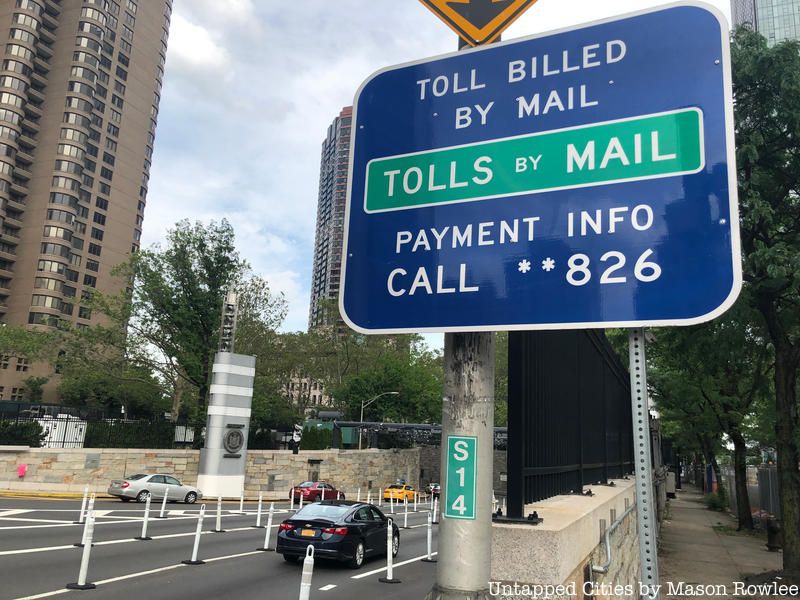
Thanks to the Wired New York forum, we learned that the tunnel originally had 23 ventilation fans, each the size of a small car. They were “exhausted,” however, after 65 years on the job. As part of a $18.8 million dollar renovation, the carbon-steel bladed fans were replaced with stainless-steel ones, which are easier to maintain.
The fans (seen here), which clear the tunnel of pollutants and carbon monoxide, move 2.8 million cubic feet of air per minute, and can completely clear out both tubes every 90 seconds. Another feature that has changed since the tunnel’s opening is its original brick roadway, which was replaced with asphalt in 1995.
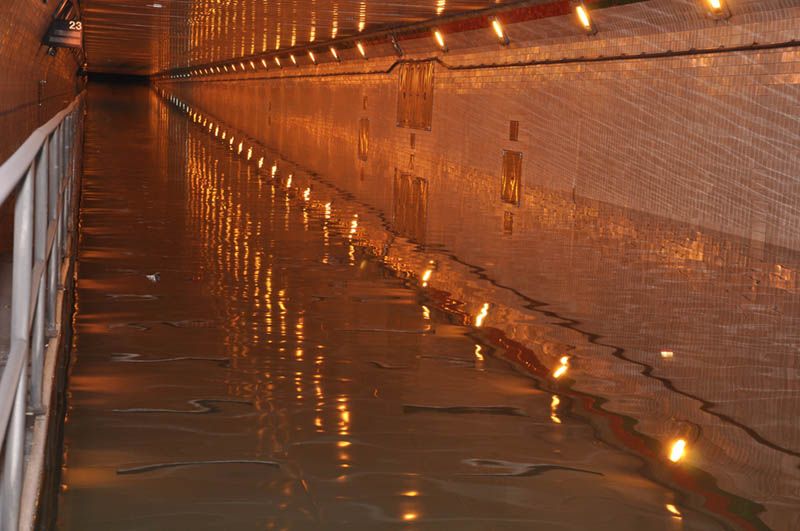
Aside from minor upgrades to add brighter lighting and a new ceiling, the Queens Midtown Tunnel has not required major rehabilitation work since President Roosevelt broke ground for the project in 1936. That was until October 2012, when Hurricane Sandy hit the New York metropolitan region, submerging 40 percent of the tunnel. The saltwater that flooded inside damaged the tunnel’s fixtures, including its lighting, traffic lights, signals.
Ten days after the storm, the tunnel reopened with full vehicle traffic access. According to the Metropolitan Transportation Authority, however, lingering repairs are still taking place. To carry out the restoration work, MTA Bridges and Tunnels was awarded a 4-year and $236.5 million contract in 2015.
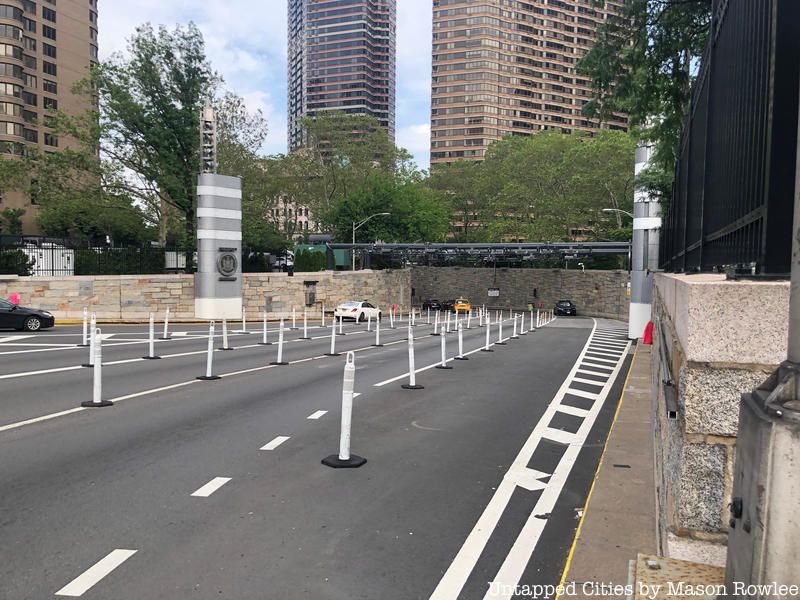
In the mid-1960’s, master builder Robert Moses proposed construction of an additional $120 million tube for the tunnel, part of a master plan to revive the Mid-Manhattan Expressway and better handle traffic, reports NYCRoads.com.
The total cost of building the tunnel, had the additional tube been constructed, was projected to be $475 million. But due to the rising sentiments against new highways, the proposal was ultimately scrapped. Also, read about a few of Moses’ other proposals that were never built.
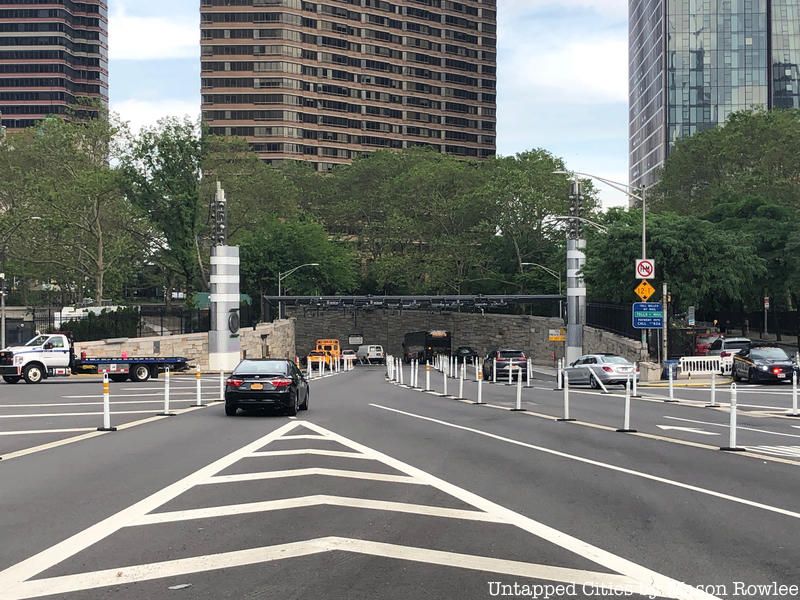
You might have noticed that the Queens Midtown Tunnel is particularly winding on its Manhattan rnd, a feature that many believe was incorporated to slow down speeders. According to Joyce Mulvaney, a Metropolitan Transportation Authority spokeswoman, in an e-mail to The New York Times, however, “…deterring drivers from speeding is an unintended consequence of the original 1930s design by Chief Engineer Ole Singstad.”
The tunnel tubes were carved “unusually deep” to avoid the shipping channel above. As a result, the ascending and descending portions of the tunnel were curved to navigate around a drastic slope — much like a road on a mountain. Additionally, the layout of the tunnel was influenced by other factors like cost of real estate and the Mid-Manhattan Expressway, which never came to fruition.
Yes, someone wrote a 72-page book about the Queens Midtown Tunnel, and you can purchased it online. Called The Man in the Booth in the Midtown Tunnel

by Doug Holder, the book features a series of poems that sheds light on a variety of characters encountered by the author. “Mr. Holder’s eye is almost like that of a child, filled with wonder and enjoyment at the oddities of humanity that surrounded him growing up in the environs of New York City,” writes a reviewer on Amazon.

The photo here shows the first day of work (April 14, 1943) for the first women to work as toll-takers. They were hired three years after the tunnel opened to replace the men that had left to serve in World War II.
However, when the war ended and the soldiers returned, women lost the opportunity to take on such jobs, and they wouldn’t become toll-takers again until 1979.
Next, check out the Top 10 Secrets of the Holland Tunnel and the Top 10 secrets of the Lincoln Tunnel.
Subscribe to our newsletter